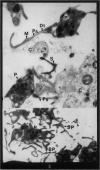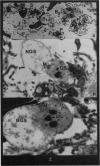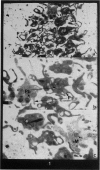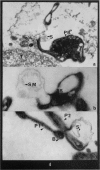Abstract
When homologous platelets in plasma were mixed in a Chandler tube apparatus with Walker 256 carcinoma cells and mouse mammary adenocarcinoma cells a tumour-platelet body was formed in each case. Walker 256 carcinoma cells and rat platelets formed a loosely knit corpus of tumour cells, tumour cell debris, and activated platelets which showed a number of pseudopodia in contact with both intact and damaged tumour cells. Mouse mammary adenocarcinoma cells and mouse platelets formed a denser corpus consisting of platelets with numerous pseudopodia, fibrin and tumour cells. Mixed in this mass were “balloon” platelets. These were pear-shaped profiles of single platelets in which the larger spheroid was granule-free and the smaller granule-rich. No granules were seen external to the platelet plasma membrane. Platelet pseudopodia took various forms. Single filiform, bifid and staghorn types were seen. Some originated from the microtubular system and were supported by it. A peripheral bubble containing membranes arranged in a foamy fashion was present at the tip of some pseudopodia. If the leading portion of a pseudopodium had reached an attractive adhesive surface then it followed this surface for a little distance so as to result in a bend away from the main axis of the pseudopodium.
Full text
PDF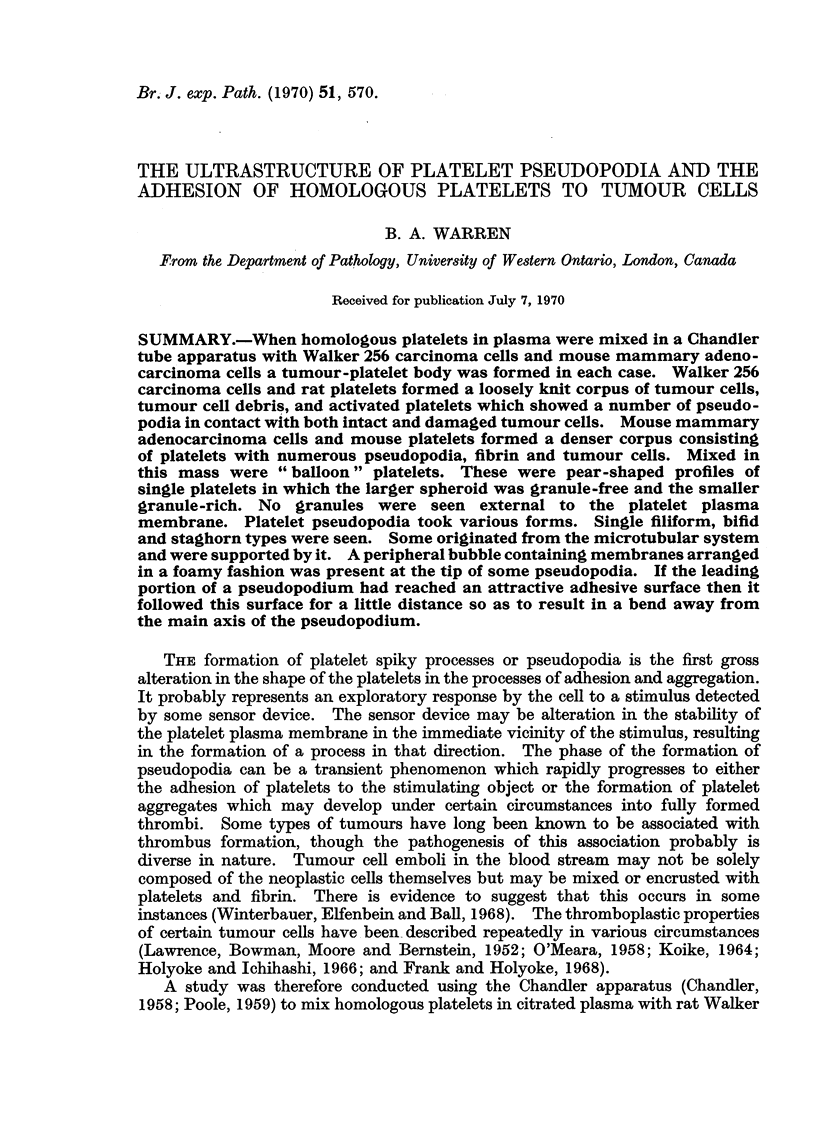
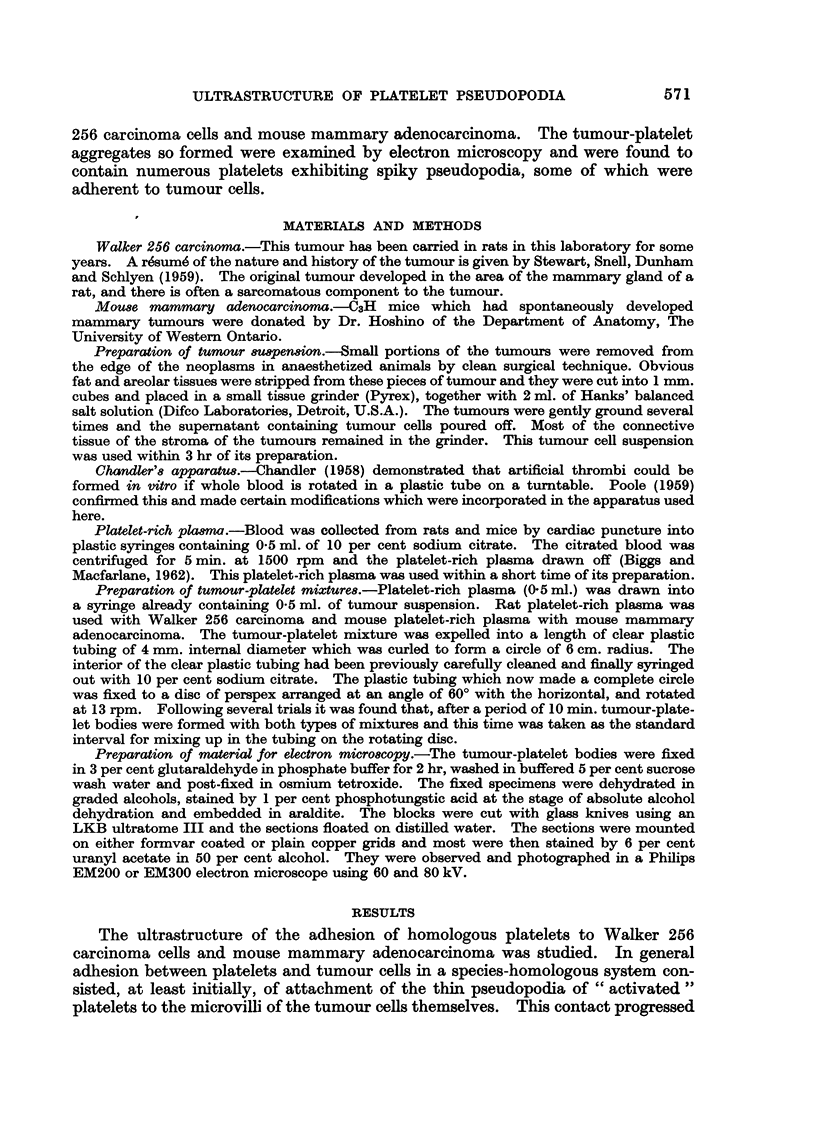
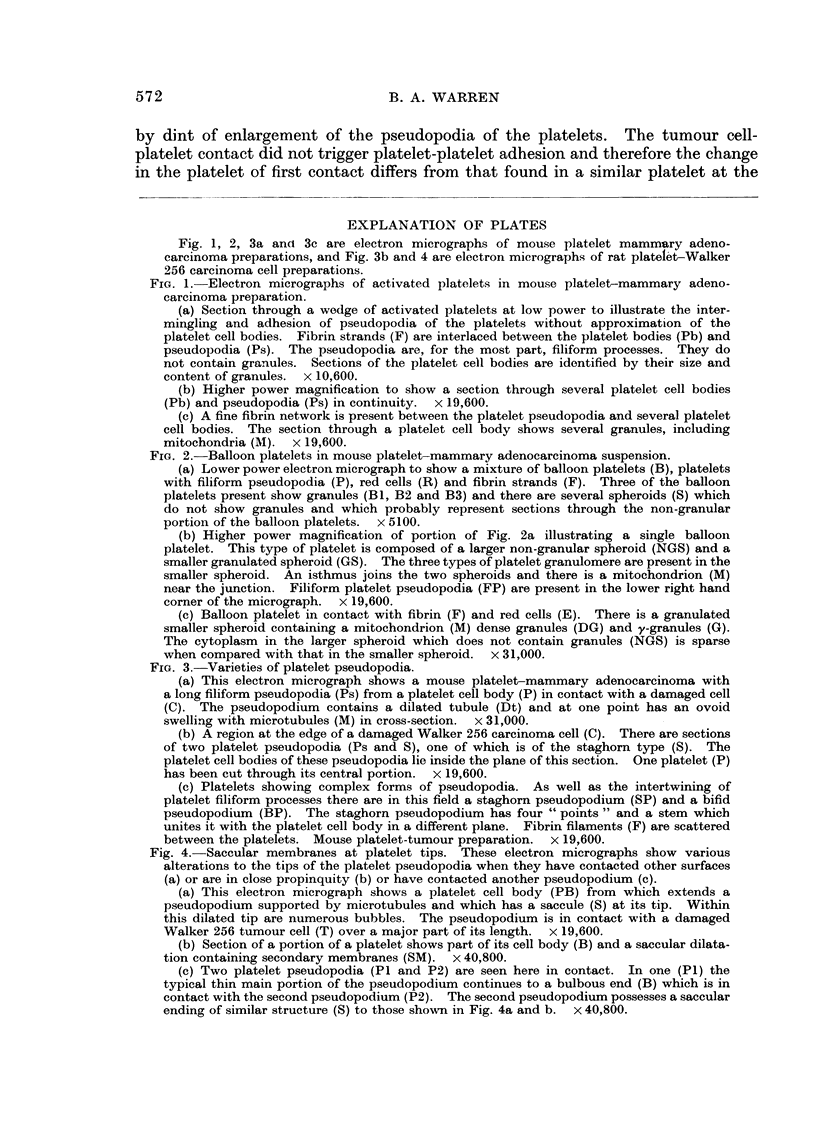
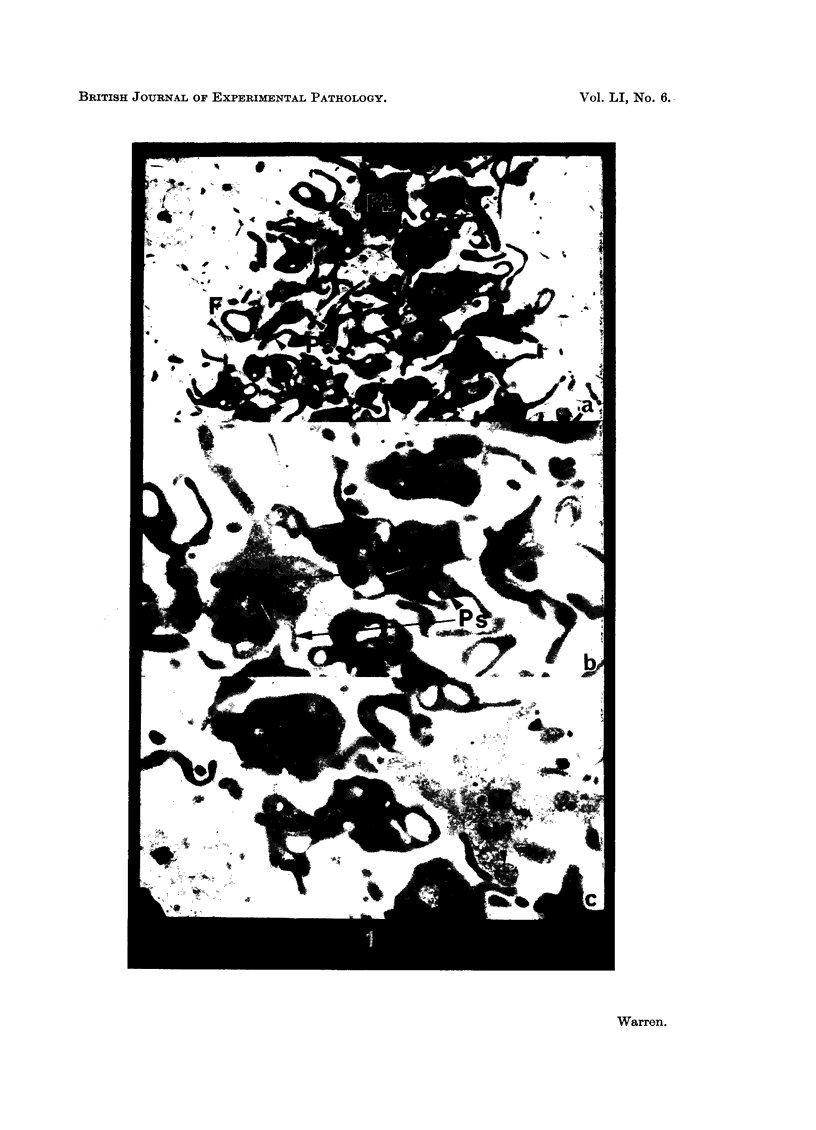
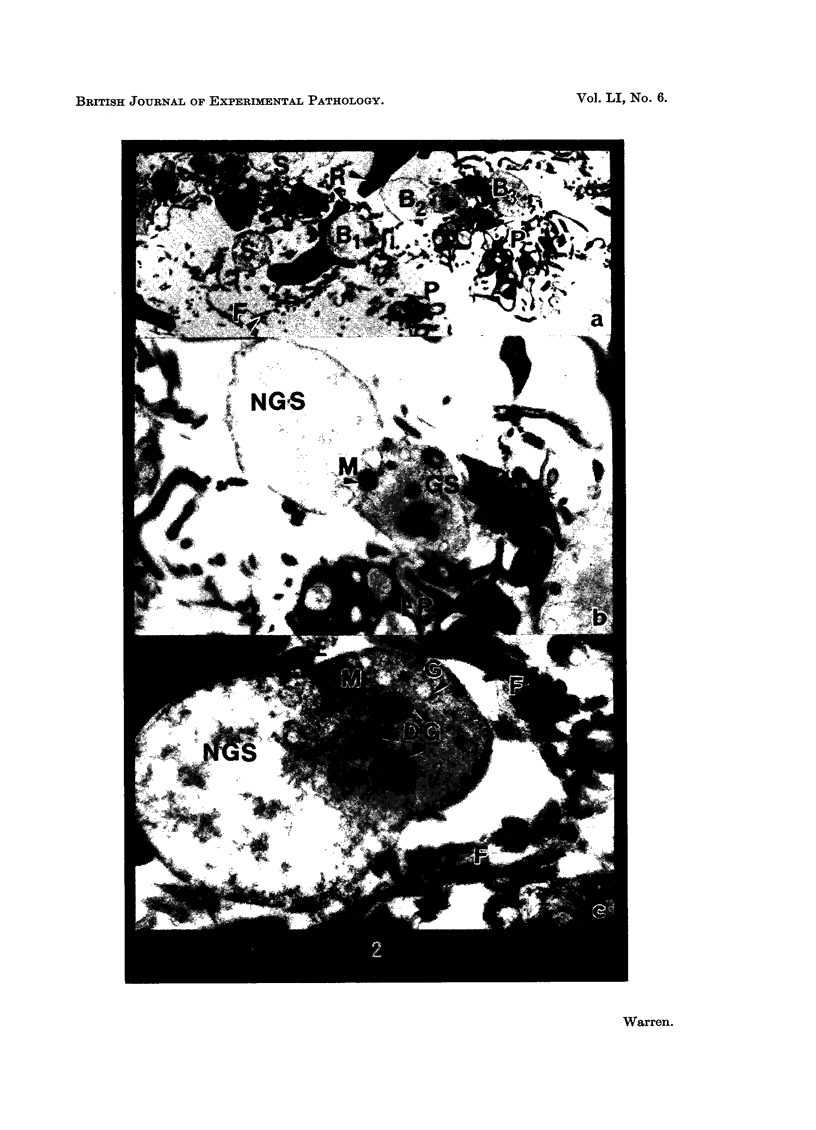
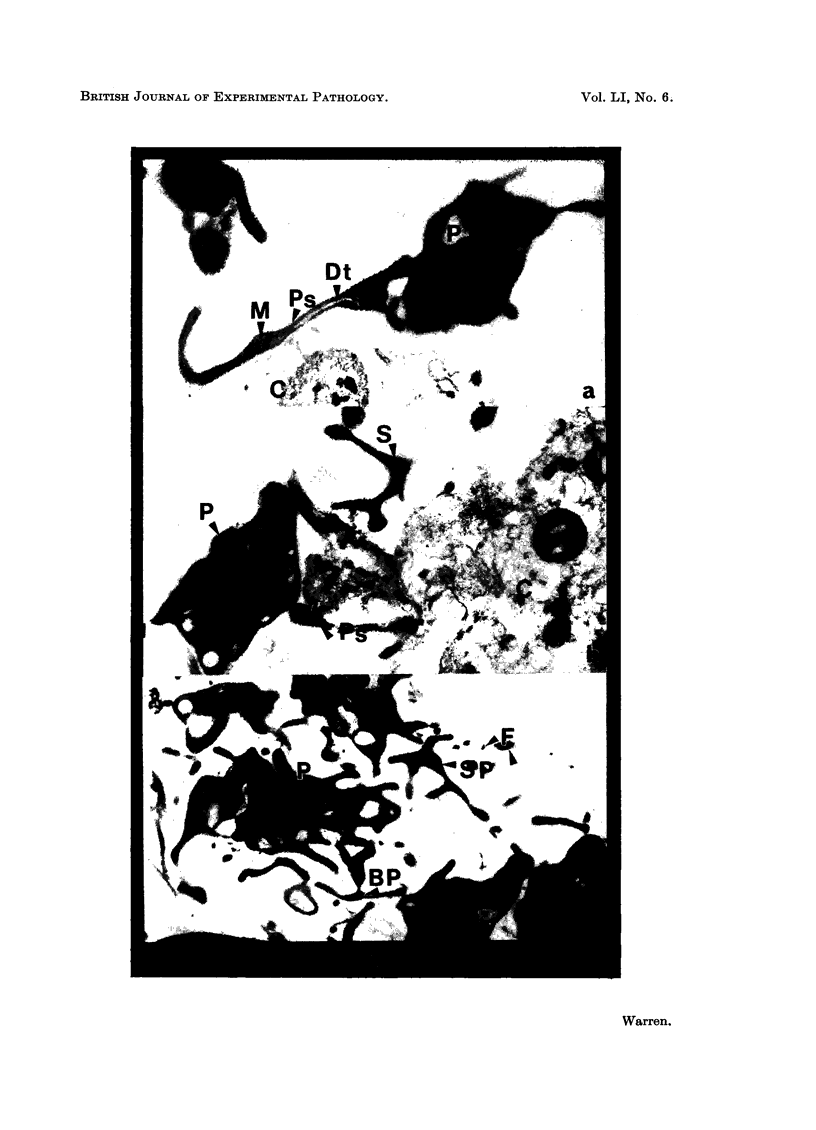
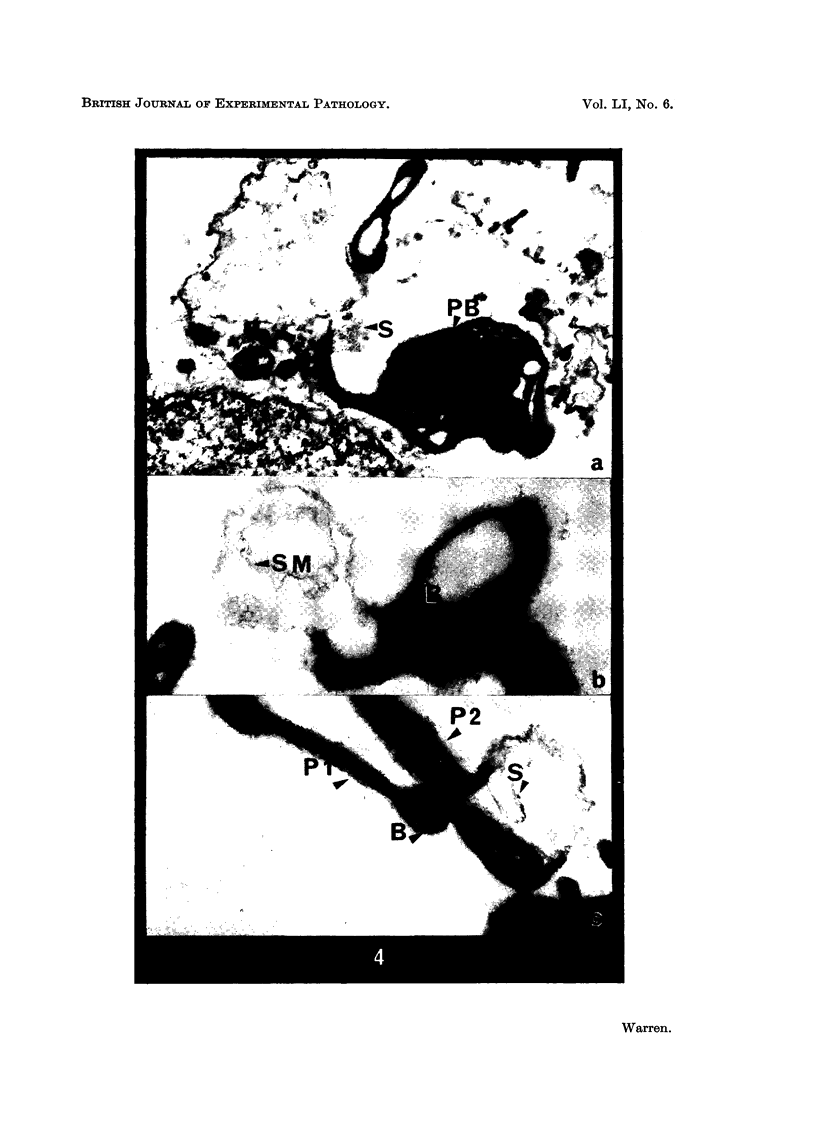
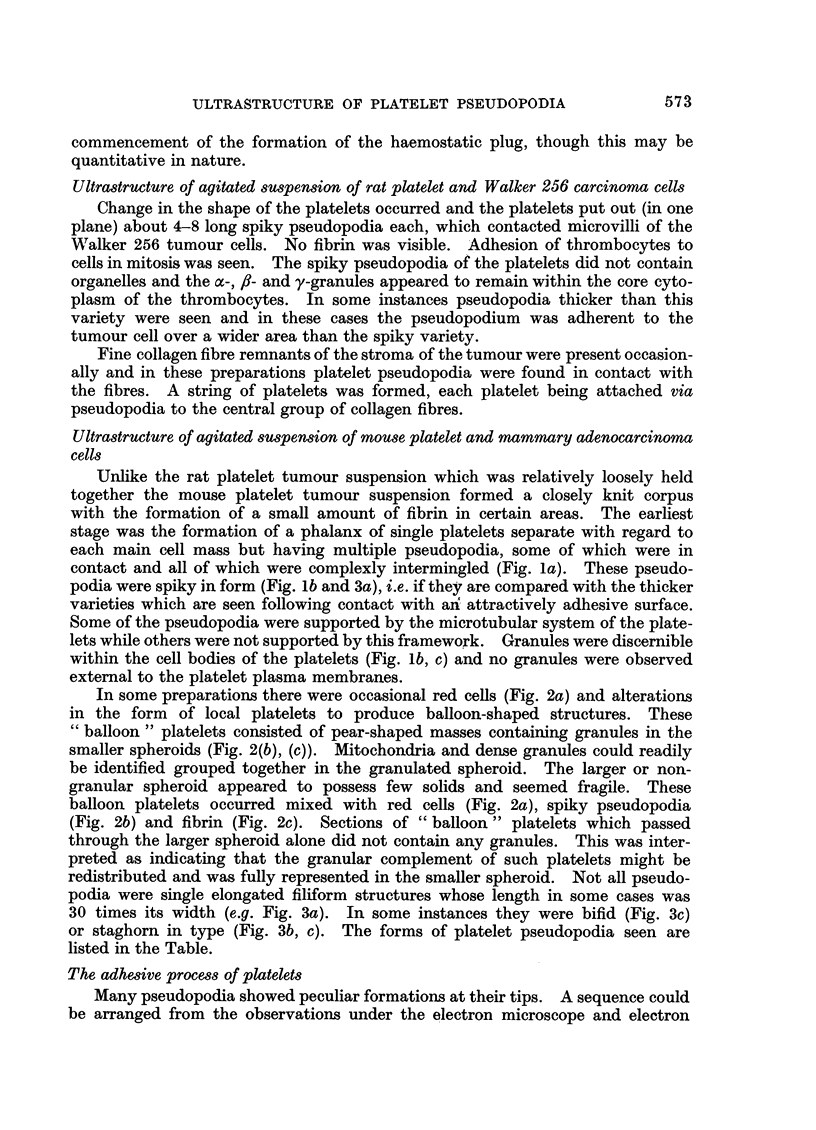
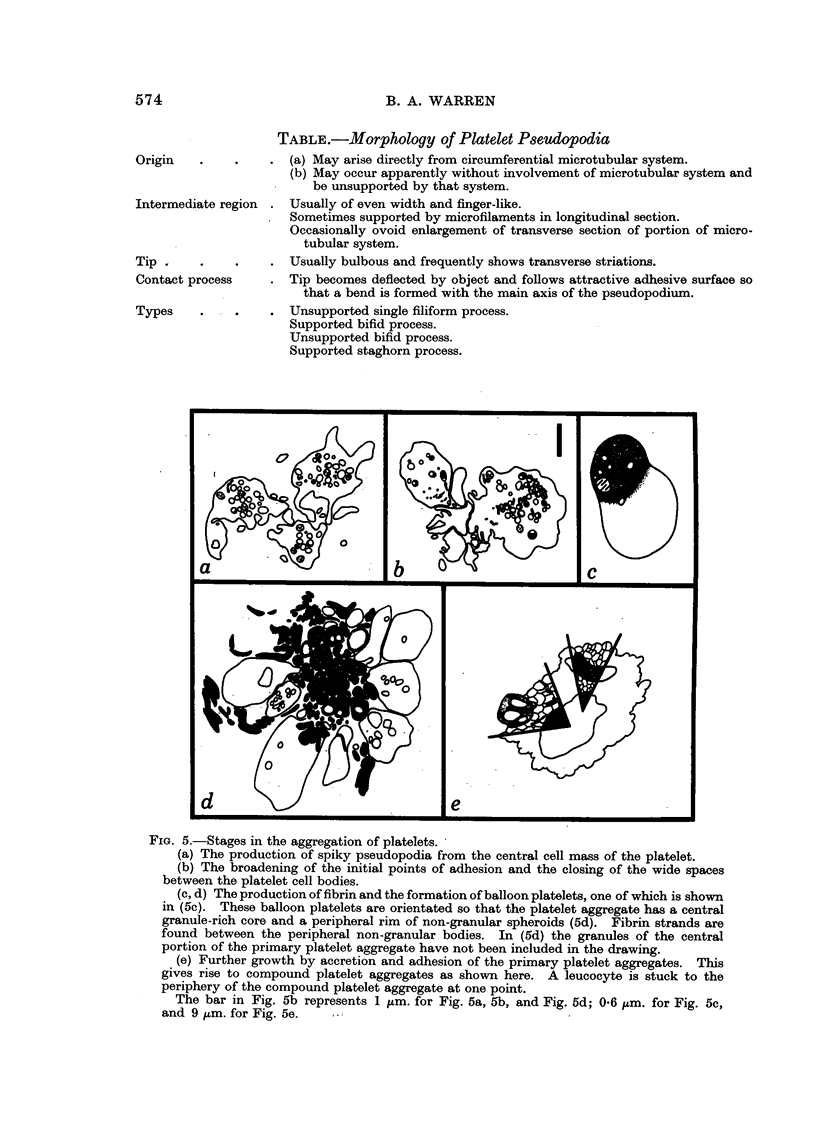
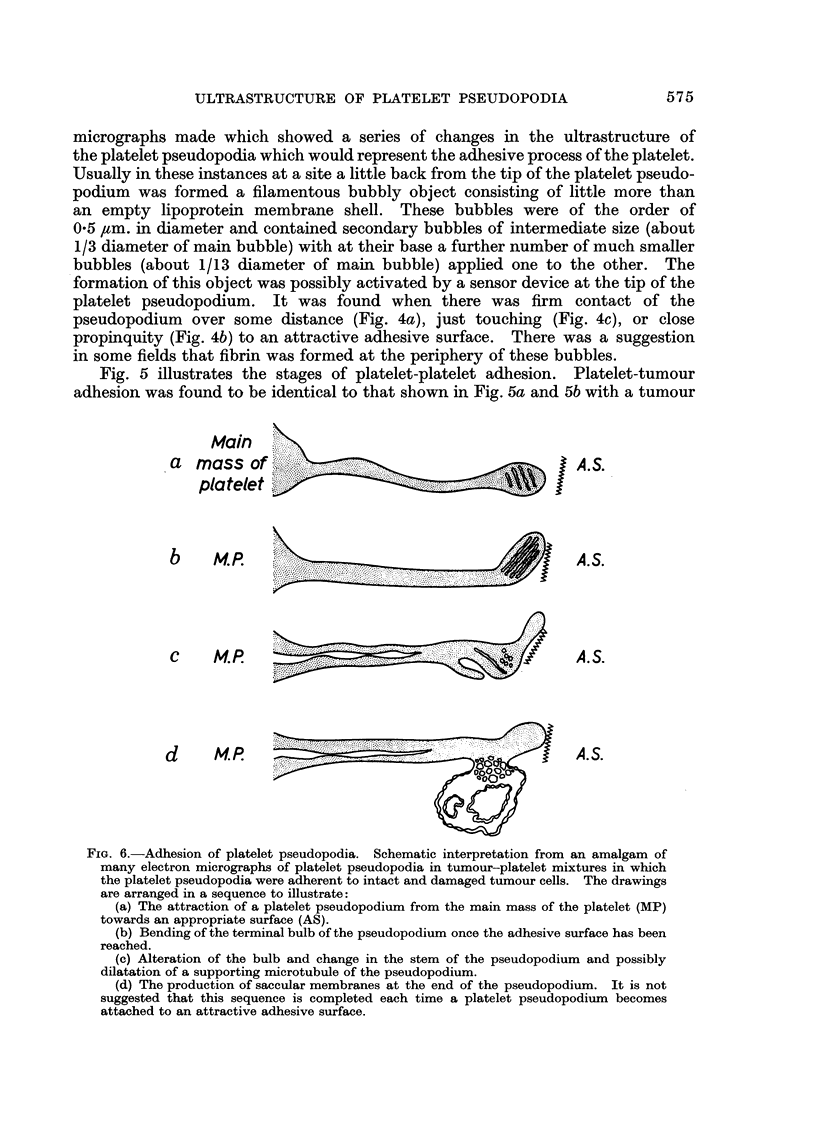
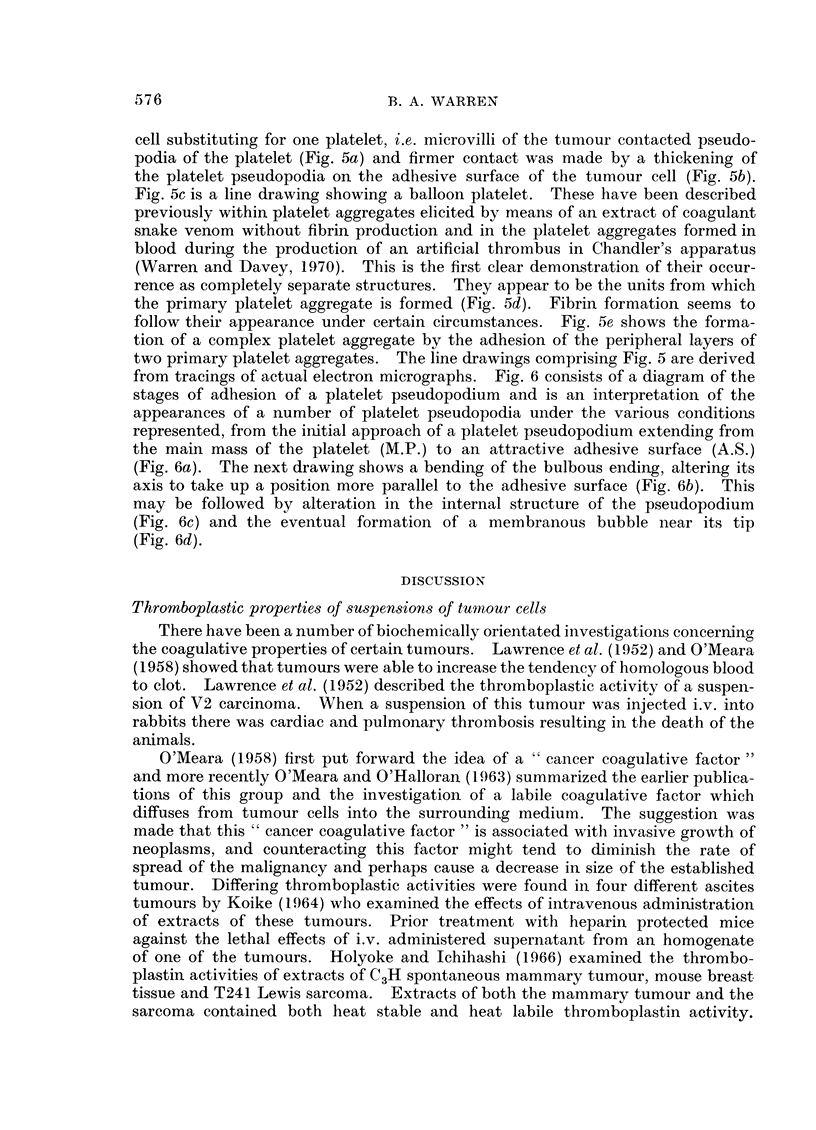
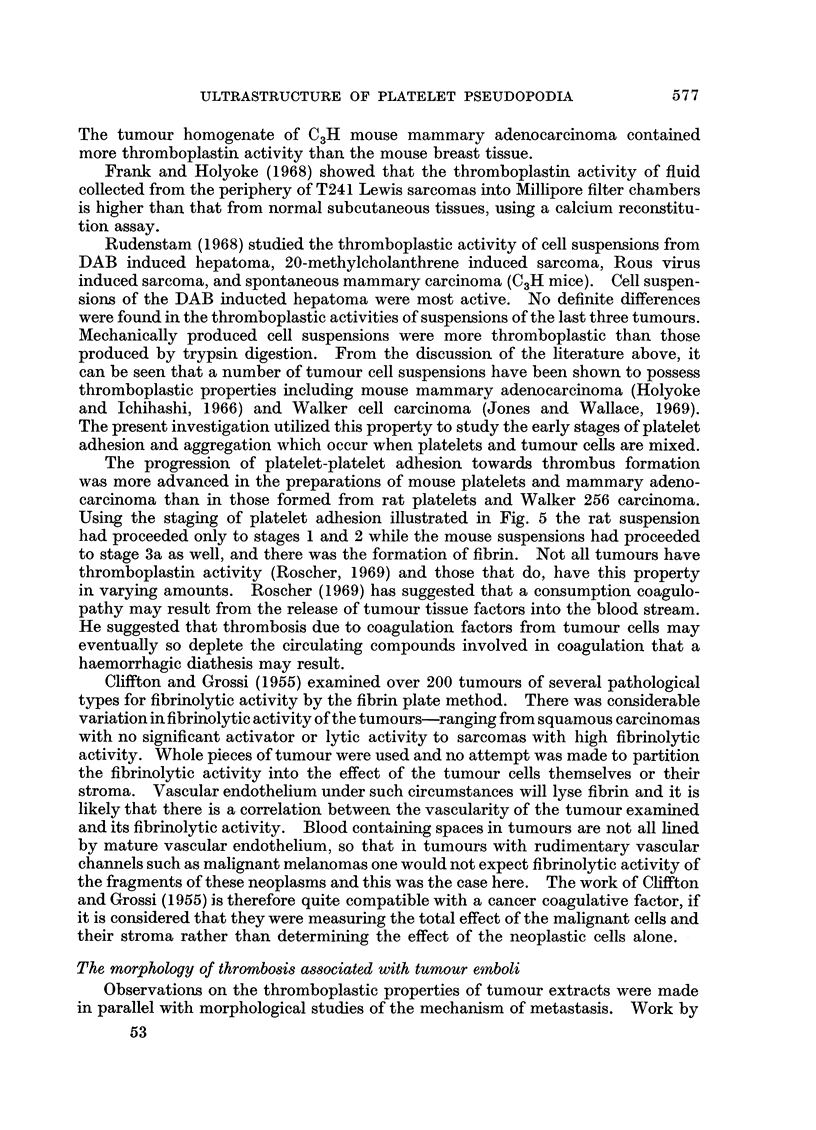
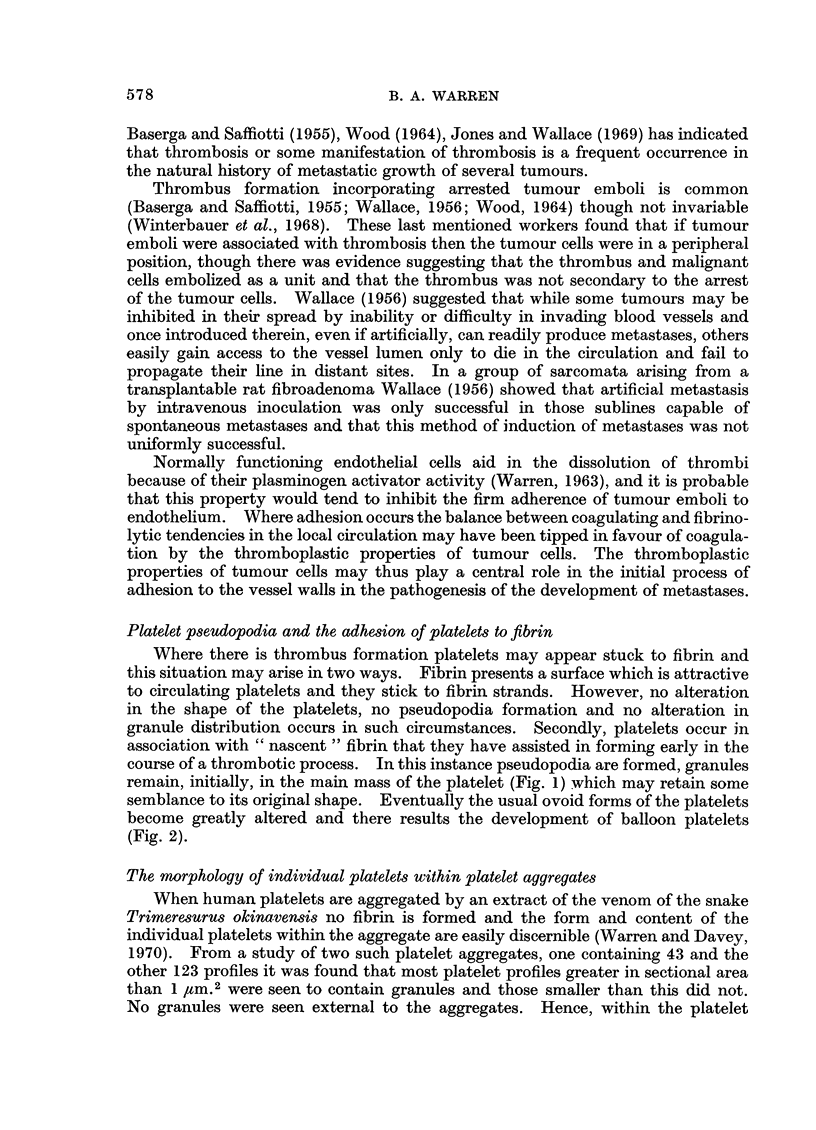
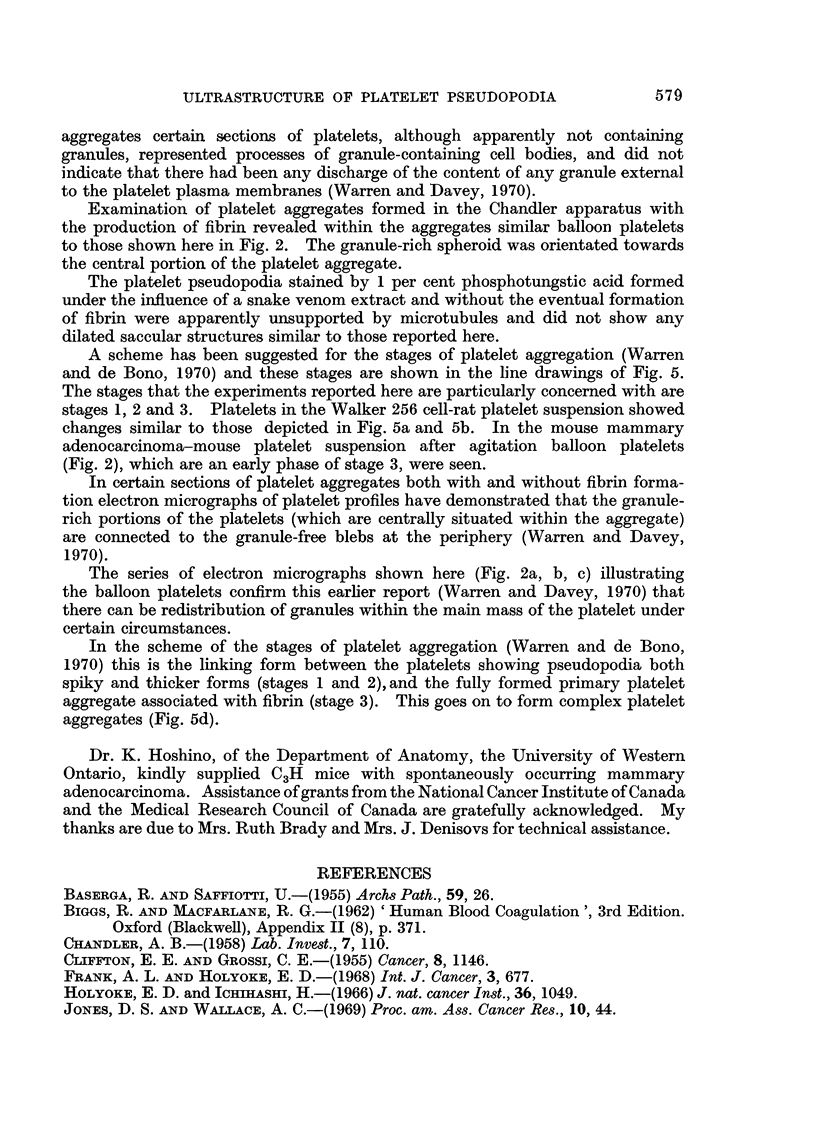
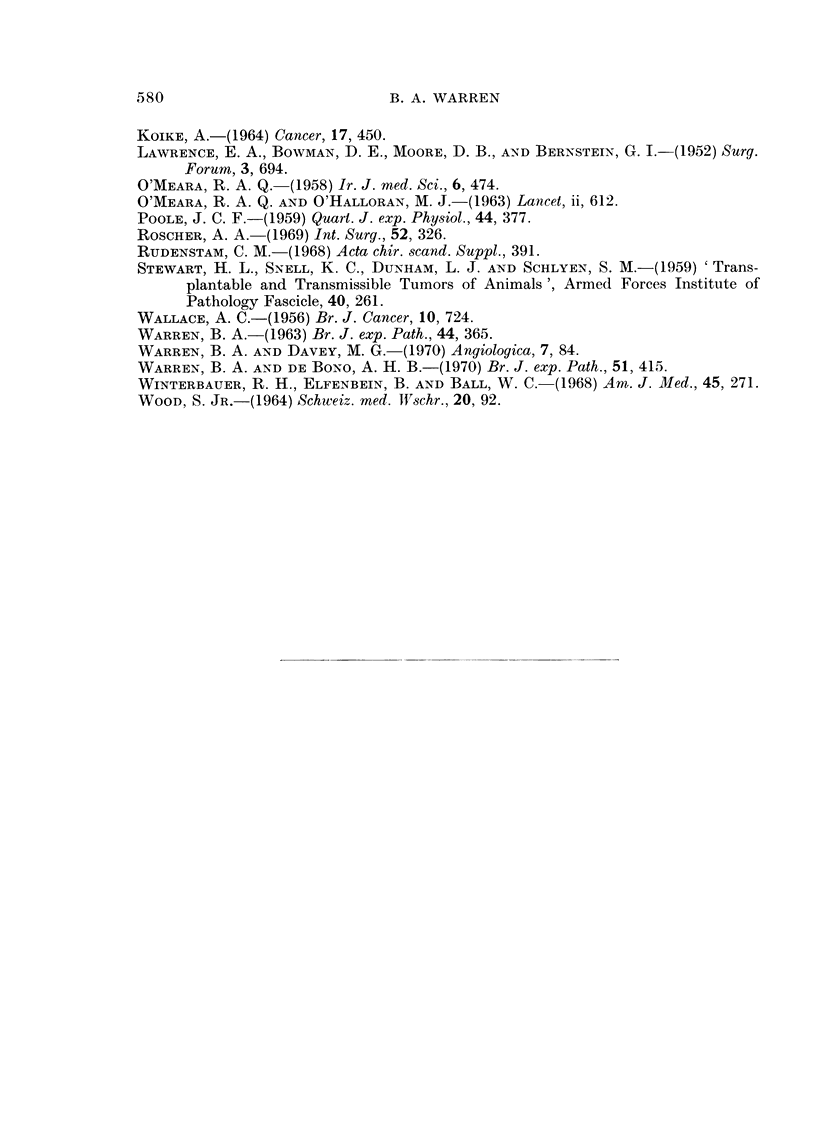
Images in this article
Selected References
These references are in PubMed. This may not be the complete list of references from this article.
- CHANDLER A. B. In vitro thrombotic coagulation of the blood; a method for producing a thrombus. Lab Invest. 1958 Mar-Apr;7(2):110–114. [PubMed] [Google Scholar]
- CLIFFTON E. E., GROSSI C. E. Fibrinolytic activity of human tumors as measured by the fibrin-plate method. Cancer. 1955 Nov-Dec;8(6):1146–1154. doi: 10.1002/1097-0142(1955)8:6<1146::aid-cncr2820080610>3.0.co;2-w. [DOI] [PubMed] [Google Scholar]
- Frank A. L., Holyoke E. D. Tumor fluid thromboplastin activity. Int J Cancer. 1968 Sep 15;3(5):677–682. doi: 10.1002/ijc.2910030516. [DOI] [PubMed] [Google Scholar]
- Holyoke E. D., Ichihashi H. The C3H/St/Ha mammary tumor. I. Thromboplastin content. J Natl Cancer Inst. 1966 Jun;36(6):1049–1056. [PubMed] [Google Scholar]
- KOIKE A. MECHANISM OF BLOOD-BORNE METASTASES. I. SOME FACTORS AFFECTING LODGMENT AND GROWTH OF TUMOR CELLS IN THE LUNGS. Cancer. 1964 Apr;17:450–460. doi: 10.1002/1097-0142(196404)17:4<450::aid-cncr2820170406>3.0.co;2-2. [DOI] [PubMed] [Google Scholar]
- O'MEARA R. A. Coagulative properties of cancers. Ir J Med Sci. 1958 Oct;394:474–479. [PubMed] [Google Scholar]
- POOLE J. C. A study of artificial thrombi produced by a modification of Chandler's method. Q J Exp Physiol Cogn Med Sci. 1959 Oct;44:377–384. doi: 10.1113/expphysiol.1959.sp001419. [DOI] [PubMed] [Google Scholar]
- Roscher A. A. Cancer and thrombohemorrhagic disease. Int Surg. 1969 Oct;52(4):326–328. [PubMed] [Google Scholar]
- Warren B. A., Davey M. G. Electron microscopy of human platelet aggregates formed in vitro with and without fibrin production. Angiologica. 1970;7(2):84–103. doi: 10.1159/000157823. [DOI] [PubMed] [Google Scholar]
- Warren B. A., de Bono A. H. The ultrastructure of initial stages of platelet aggregation and adhesion to damaged vessel walls in vivo. Br J Exp Pathol. 1970 Aug;51(4):415–422. [PMC free article] [PubMed] [Google Scholar]
- Winterbauer R. H., Elfenbein I. B., Ball W. C., Jr Incidence and clinical significance of tumor embolization to the lungs. Am J Med. 1968 Aug;45(2):271–290. doi: 10.1016/0002-9343(68)90044-2. [DOI] [PubMed] [Google Scholar]



